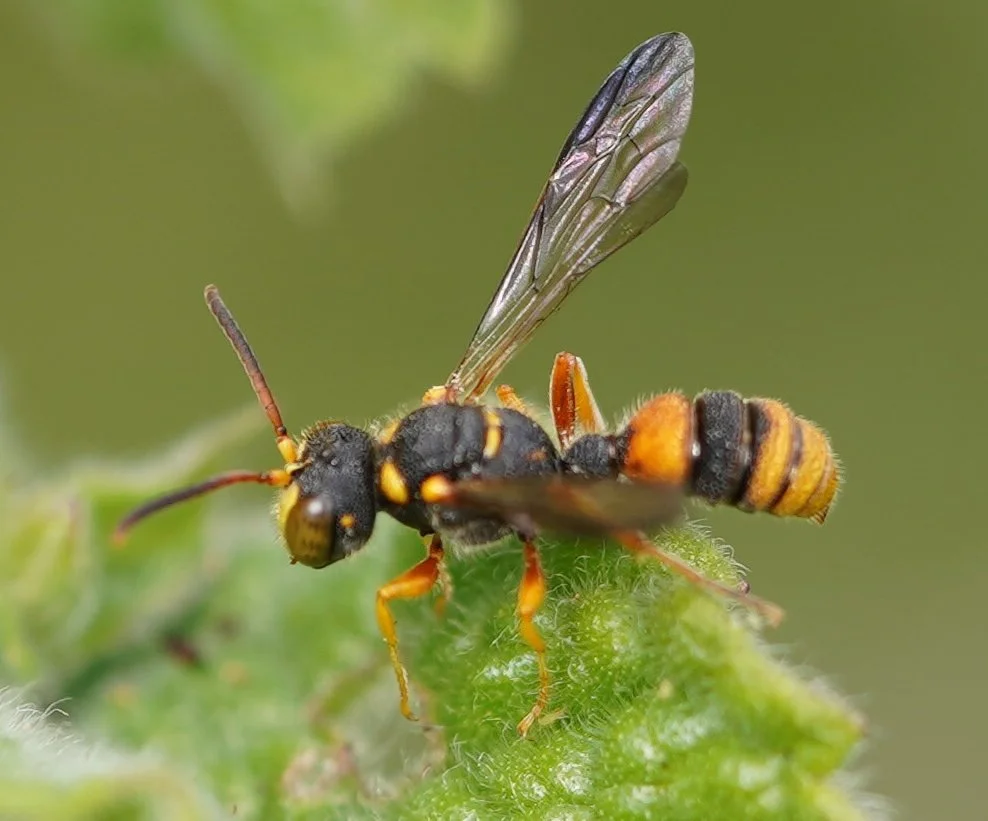
C. antipodes
Male Cerceris are typically smaller than their female counterparts. They can be recognised by the additional visible tergite (T7), although it is often small, and by the number of antennal segments (a total of 13, rather than 12).
The colour pattern of males typically differs somewhat from the female. For example, in southern C. antipodes males the anterolateral spots of T2 are typically large and medially joined to form a continuous basal band.

C. australis
In comparison to the previous example of C. australis, note the all-black petiole and deeper orange hue of the metasomal markings (particularly T2).
https://inaturalist.ala.org.au/observations/150642673
(image courtesy Reiner Richter)

C. australis
An abundant and widespread species throughout eastern Australia. The colour varies in both hue and extent: from yellow to orange; some individuals extensively marked, others far less so.
Compare this male from north NSW with the following one from central Victoria. Note differences in the colour of the petiole and overall hue of the markings.
However males consistently have T2 yellow & T3 wholly (or almost wholly) black.



